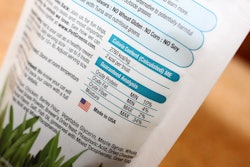
Caloric penetration is a key metric for the pet food business that is often misunderstood or biased, leading to inaccurate demand forecasts and, eventually, to misallocation of production and commercial resources.
The caloric penetration rate is the percentage of commercial pet food over the total food consumption of a pet—how much of the pet’s diet is comprised of commercial dog or cat food.
It is worth noting that a wide portion of pet owners feed their dogs and cats only with pet food, meaning the individual caloric penetration rate is 100%. Contrarily, numerous pet owners in some markets only feed their pets with homemade preparations or table scraps. In this extreme case, caloric penetration for pet food is 0%.
This information suggests that caloric penetration is an unknown variable that follows a statistical distribution taking values from 0% to 100%. In a market with a pet population of, say, 1 million pets, the caloric penetration rate will have the same number of values, one for each pet.
As it is impossible to know the caloric penetration of every pet, an alternative is estimating a consolidated metric with one of two approaches. The first is to use other variables that may approximate caloric penetration, or secondly, to sample the pet population to obtain an unbiased estimate of the average caloric penetration that represents that of the whole population.
Caloric penetration metrics require robust estimation
The dog population by breed and the total dog food volume sales are the variables that can help estimate caloric penetration in a market. Yet if one variable is missing or is estimated incorrectly, the result is useless; and it is important to remember that the ingestion of food varies significantly across dog breeds.
As there is currently no global dog population census by breed (and not all individual countries track dog population by breed), it is likely that such an approach is inaccurate. Thus, as various pet food markets become more mature, they require better ways to estimate the caloric penetration.
For example, in Mexico, some industry players—with limited data—state that the caloric penetration for dogs is just above 50%, meaning there is a huge potential for growth ahead. However, such a metric is likely biased, as it is generated from small samples of consumers that don’t represent the population. It does not break down the samples by dog breeds and also includes millions of street dogs, a source of additional bias.
Potential for growth, yet with some caveats
In past years, market analysts have been working with both variables (dog population by breed and pet food sales), with representative samples that yielded a larger caloric penetration rate. Indeed, it is believed that Mexico still has potential for growth at about 25%, meaning the current average caloric penetration rate for dogs approaches 75% (excluding street dogs).
A robust metric of caloric penetration may help pet food manufacturers understand not only how much further they can grow, but also which breeds present the best opportunities.















